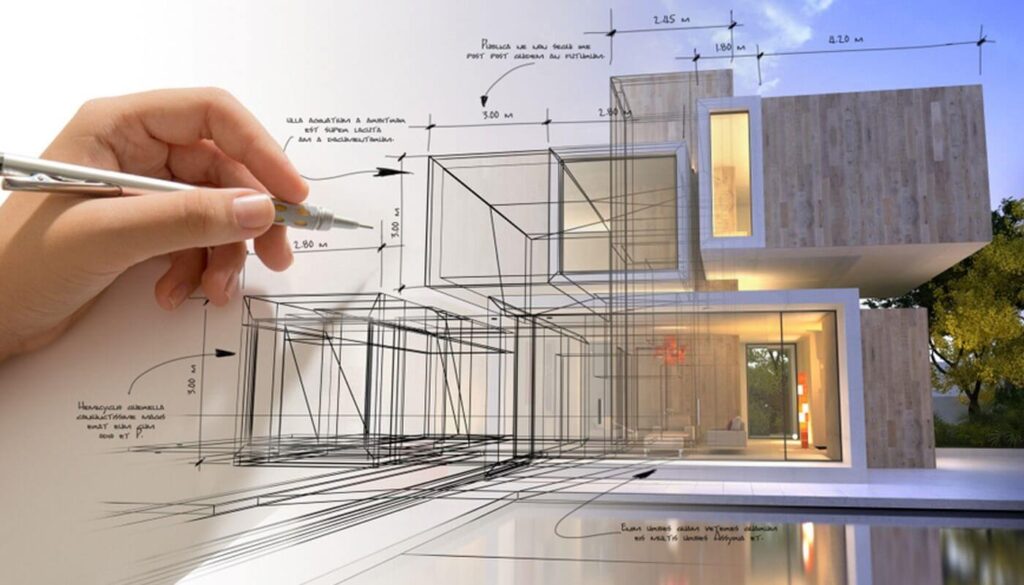Leading Reasons to Pick CDA Architects for Your Residential or Commercial Styles
Leading Reasons to Pick CDA Architects for Your Residential or Commercial Styles
Blog Article
Understanding the Collaborative Refine Between Engineers and Engineers in Modern Building Projects
The joint procedure between engineers and designers is necessary in contemporary construction tasks, as it harmonizes design intent with engineering feasibility. Checking out these characteristics discloses understandings that can substantially affect project outcomes and overall sector criteria.
The Value of Cooperation
The joint synergy in between designers and engineers is crucial for the successful understanding of any building project. This partnership combines distinctive proficiency and viewpoints, allowing the combination of ingenious style with sensible design solutions. By collaborating, engineers and designers can ensure that a job not only fulfills aesthetic and useful demands however also follows safety, sustainability, and financial restrictions.
Partnership promotes a common vision, facilitating the positioning of objectives and assumptions from the start. This positioning is vital in resolving possible challenges and mitigating dangers that could develop during the project lifecycle. Furthermore, a collective technique enables the efficient appropriation of resources, optimizing both time and expense.
The significance of collaboration includes the iterative procedure of design and construction, where feedback from designers can educate architectural decisions, resulting in more feasible and sustainable styles. Alternatively, engineers can motivate designers to believe artistically regarding exactly how to achieve structural honesty without jeopardizing artistic intent. Eventually, the collaborative relationship in between engineers and engineers is not merely beneficial; it is fundamental to the development of high-grade, useful, and ingenious developed settings that satisfy the needs of culture.
Communication Techniques and Devices
Efficient interaction methods and devices are vital for fostering collaboration between designers and designers throughout the job lifecycle. Establishing clear networks of interaction is vital to make certain that all employee are aligned with project goals, timelines, and obligations. Normal meetings, both in-person and virtual, provide chances for stakeholders to review development, address problems, and make informed decisions.
Utilizing task administration software program, such as BIM (Structure Info Modeling) systems, enhances partnership by allowing real-time sharing of layout adjustments and technical requirements. These devices assist in transparency, allowing designers and engineers to imagine adjustments and analyze their effect on the general task.

Shared Goals and Job Vision

Developing shared goals entails open dialogue and a complete understanding of each self-control's payments. Designers usually concentrate on style intent, spatial connections, and individual experience, while designers highlight structural stability, systems performance, and compliance with regulations (cda architects). When these viewpoints are straightened, the outcome is a natural project that abides by both creative desires and technical expediency
Moreover, a well-defined project vision promotes liability among group members, motivating each participant to take possession of their role in accomplishing the preferred end result. Regular check-ins and joint workshops can additionally reinforce this commitment, permitting for changes to be made as the task evolves. Eventually, a common vision not just improves team effort yet likewise boosts the top quality of the last deliverable, resulting in successful project conclusion.
The Role of Modern Technology
Leveraging modern technology has become vital in enhancing collaboration between designers and designers. Structure Details Modeling (BIM) stands out as a crucial technology, enabling both architects and designers to develop comprehensive 3D models that encapsulate design intent and structural integrity.
In addition, cloud-based platforms make it possible for seamless partnership, permitting task stakeholders to access and upgrade job data from anywhere. This fosters a society of openness and accountability, as modifications can be tracked and assessed in real-time. Additionally, mobile applications more enhance communication, offering on-site groups with prompt accessibility to job specs and updates.
Emerging innovations such as artificial look at this now intelligence and artificial intelligence are also beginning to play a duty in anticipating evaluation, aiding teams determine prospective issues prior to they emerge. Ultimately, the function of modern technology in architecture-engineering cooperation not just improves operations performances yet also improves development, causing even more successful job end results. By accepting these technological innovations, designers and engineers can ensure a much more cohesive and efficient collective process throughout the building lifecycle.
Study in Successful Partnerships
Many case research studies illustrate the profound influence of reliable partnerships between architects and designers on task end results. One remarkable instance is the collaboration on the High click to read Line in New York City, where landscape architects, engineers, and city coordinators worked together to transform a deserted rail line into a lively public park. This multidisciplinary strategy not just boosted the visual top quality yet also ensured structural security and ecological sustainability.
One more excellent situation is the design and building and construction of the Sydney Music Hall. The partnership between designer JÃ ¸ registered nurse Utzon and structural designer Ove Arup exemplified innovative problem-solving. Their collaboration enabled the iconic shell-like design while attending to complicated design obstacles, eventually bring about an ageless building masterpiece.
The Burj Khalifa in Dubai even more shows the value of joint efforts. cda architects. The combination of design and engineering knowledge enabled the task group to attain unprecedented heights while adhering to safety regulations and visual vision
These instances underscore the significance of interaction, depend on, and shared goals. In today's complicated building environment, such partnerships are vital to browsing obstacles and providing projects that fulfill both practical and visionary goals.
Final Thought
In conclusion, the collaboration in between designers and engineers is crucial for the success of modern building tasks. Efficient interaction techniques, a shared task straight from the source vision, and the integration of sophisticated modern technologies are crucial parts that facilitate this partnership. By promoting a culture of responsibility and leveraging devices such as Structure Info Modeling (BIM), groups can browse task complexities, ensuring that visual, functional, and sustainability purposes are attained. Ultimately, this synergy causes innovative and successful project end results.
Report this page